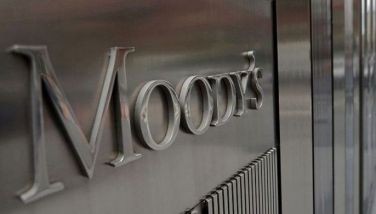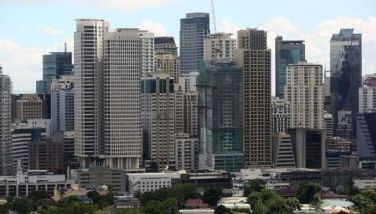Banks’ bad loans ratio down to 3.41% in October
MANILA, Philippines — Soured loans of Philippines banks continued to fall, resulting in further easing of the industry’s non-performing loans (NPL) ratio for eight straight months to hit the lowest level in more than two years, according to the Bangko Sentral ng Pilipinas (BSP).
Preliminary data showed the industry’s NPL ratio improved further to 3.41 percent in October from 3.42 percent in September, the lowest since the 2.85 percent recorded in August 2020.
The share of soured loans to the total loans of Philippine banks has been easing since March amid the further reopening of the economy as the COVID-19 quarantine and lockdown protocols in the National Capital Region (NCR) and nearby areas shifted to Alert Level 1.
The NPL ratio of Philippine banks peaked at 4.51 percent in July and August last year as the economy struggled due to the impact of the global health pandemic.
The banking sector’s bad debts declined by 14.9 percent to P411.63 billion in end-October from P483.98 billion in end-October last year, while loan growth accelerated to 10 percent as banks disbursed P12.06 trillion from P10.96 trillion as the economy further reopens.
Likewise, the banking sector’s past due loans declined by 13.9 percent to P486.75 billion from P565.78 billion, while restructured loans slipped by 3.1 percent to P327.35 billion from P337.82 billion.
Meanwhile, allowance for credit losses rose by 3.8 percent to P429.2 billion in end-October from P413.37 billion in the same period last year. This translated to a loan loss reserve level of 3.56 percent and a NPL coverage ratio of 104.27 percent.
The BSP earlier projected that the NPL ratio of Philippine banks would accelerate and peak at 8.2 percent for this year.
The Monetary Board has so far raised interest rates by 300 basis points, bringing the benchmark rate to a 14-year high of five percent from an all-time low of two percent, to fight inflation and smoothen volatility in the foreign exchange market amid the aggressive rate hikes by the US Federal Reserve.
It is widely expected to deliver another 50-basis-point hike on Thursday as inflation is seen peaking at above eight percent this month after accelerating to a 14-year high of eight percent in November from 7.7 percent in October.
Inflation averaged 5.6 percent from January to November, well above the central bank’s two to four percent target range.
The BSP now expects inflation to average 5.8 percent for this year, 4.3 percent for next year, and 3.1 percent for 2024.
Despite the series of rate hikes, credit growth accelerated to its fastest pace in almost four percent to hit 13.9 percent in October from 13.4 percent in September.
Loans disbursed by big banks reached P10.55 trillion in end-October from P9.27 trillion a year ago as the country continues to rebound from the impact of the COVID-19 pandemic.
- Latest
- Trending
































